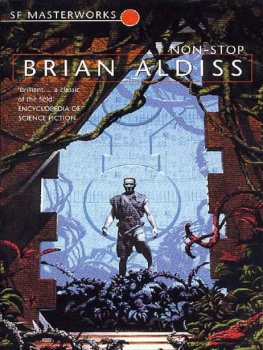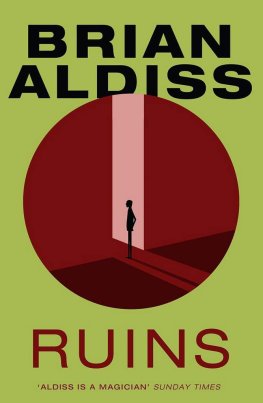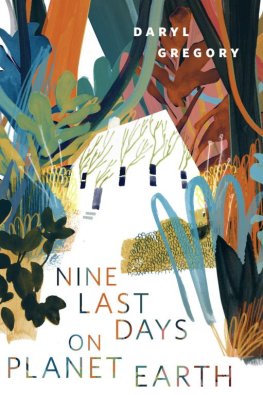Helliconia Spring
by Brian Aldiss
A publisher friend was trying to persuade me to produce a book I did not greatly wish to write. Trying to get out of it, I wrote him a letter suggesting something slightly different. What I had in mind was a planet much like Earth, but with a longer year. I wanted no truck with our puny 365 days.
Lets say this planet is called Helliconia, I wrote, on the spur of the moment.
The word was out. Helliconia! And from that word grew this book.
* * *
Science of recent years has become full of amazing concepts. Rivalling SF! We are now conversant with furious processes very distant from our solar system in both time and space. Cosmologists, talking of some new development, will often say, It sounds like science fiction. A perfectly just remark, reflecting as it does the relationship that exists between science fiction and science.
This relationship is not capable of precise definition, since science permeates our lives, and both scientists and writers are wayward people. It is a shifting relationship. What is clear is that science fiction functions in predictive or descriptive mode. It can attempt either to stay ahead of science, to foresee future developments or discontinuities, or it can dramatise newly achieved developments, making the bare (and, to some, arid) facts of science accessible to a wide readership.
An example of the former method (the Wait and See method) is Gregory Benfords novel, Timescape, in which he talks of the intricacies of time in a way which has only recently entered discussion by the scientific community.
An example of the latter method (the Digestive Tract method) is H. G. Wells The Time Machine, in which he demonstrates, as it were, the possibility of solar deatha startlingly new idea when Wells wrote.
In Helliconia, the Digestive Tract method is employed. In 1979, while this book was a mere building site, its foundations open to the alien sky, James Lovelock published a small book entitled, Gaia: A New Look at Life on Earth. The name Gaia was suggesfed by Lovelocks friend (I might even claim him as a friend of mine) William Golding, the novelist. The classical Gaia was the goddess of the Earth in Greek mythology; Lovelock was outlining an impersonal updated version of that gubernatory personage. Lovelock pointed out that the continued survival of a living Earth is miraculous. Life survives despite an amazingly narrow range of chemical and physical parametersparameters subject to fluctuation.
How is it that the Earths temperature has not long ago increased, as has happened on our sister planet Venus; that the salinity of the oceans has not become more toxic than the Dead Sea, that atmospheric oxygen has not become tied down in oxides, or that hydrogen has not escaped from the upper atmosphere? Lovelocks answer known as the Gaia Hypothesis, is that everything on the earth, the biomass, constitutes a single self-regulatory entityliving, of course, but of course without conscious intention. Gaia has no particular centre, no prime minister or parliament no Fuhrer, not even a Greek goddess; it functions through its unfocused complexity, built up over millions of years. The implication is that the work of bacterial and other forces have built, and maintain, the living world we know, best to suit themselvesa process in which humanity has played small part.
I gave myself up to James Lovelocks arguments in his first book and succeeding ones in the way that, in an earlier phase of existence, I had surrendered myself to Thomas Hardys novels.
Interestingly, Lovelock is an independent biologist of a rather old-fashioned kind, unsupported by universities or other institutions. And his hypothesis relies on the mode of close observation and enquiry which is such a marked feature of Charles Darwins work. Darwin perceived where we merely see. Lovelock points out that what he calls city wisdom has become almost entirely centred on problems of human relationships; whereas, in a natural tribal group, wisdom means giving due weight to relationships with the rest of the animate and inanimate world.
He says, I speak from personal experience when I say that those of us who go forth in ships to travel to remote places are few in number compared with those who chose to work in city-based institutions and universities.
From travel, investigation, and perception, Lovelock built up his integrative hypothesis. I was wildly excited by it. Whether it was true or not, I felt that it was just and should be proved by research, and that here was a thesis which delivered new understanding. Lovelock wrote during the period of the Cold War, when we lived in the shadow of nuclear war, and the threat of nuclear destruction, followed by nuclear winter. Had nuclear winter come about, it would have been the ultimate profaning of nature, the rape and slaughter of Gaia.
These intellectual and emotional ideas were in my mind when I sat down to the seven year task of writing Helliconia. I hoped in it to dramatise on a wide scale the workings out of Lovelocks hypothesis.
* * *
The story between these covers is just a scientific romance. It talks about pretty ordinary fallible people living within fallible systems, just like ustogether with the alien who also has a share in us. Although it may not look like it, I did not intend to place a great scientific emphasis on this introduction. SF, that spectral entity, is not science but fiction, bound to obey many of fictions ordinary rules, possibly with an extra imaginative dimensionthere is no proof whatsoever that life exists elsewhere in the galaxy.
Deeply interested in the workings of the world of affairs, of economics and ideology and religion, I had written a novel (Life in the West) concerning such matters, of which I was merely a bystander. The novel met with enough success for me to hope to do something similar on a larger scale.
So at first I thought of an allegory, with the three major power blocs represented by three Helliconian continents. Happily, this scheme soon faded awayalthough three continents were left behind by the tide, Campannlat, Hespagorat, and Sibornal.
For by then creative instincts flooded in, washing away more didactic ones. All the conflicting impulses with which our minds are filled seemed to rise up and organise themselves in a remarkable way. Whole populations seemed to assemble, with a great rustle of garments, from the dark. This astonishing creative process, with its seeming autonomy, is one of the major pleasures of writing.
Naturally, I had to find a story. Three stories, in fact.
There I already had general ideas, once I realised that I desired to assemble a large cast of characters.
What I could not grasp to begin with was what the Helliconian vegetation would took like.
I was stuck. My three most able advisers, Tom Shippey, Iain Nicolson, and Peter Cattermole, had done their best to drum philological and cosmological facts into my head. Still I could not think what a tree on Helliconia would look like. If I could not imagine a tree, I told myself, I was incapable of painting the whole new binary system Iwehad devised.
One evening in 1980, I was travelling from Oxford to London by train, to attend some function or other at the British Council. The time was towards sunset as the train passed Didcot power station. My wife and I had often talked about the stations cooling towers, were they not, from a distance at least beautiful? Wasnt the industrial landscape beautiful? Would John Keats have found such sights a joy forever?
The towers on this occasion stood with the sun low behind them. They breathed forth immense clouds of steam into the still-bright sky. Towers and steam were a unity, black against the light background.







